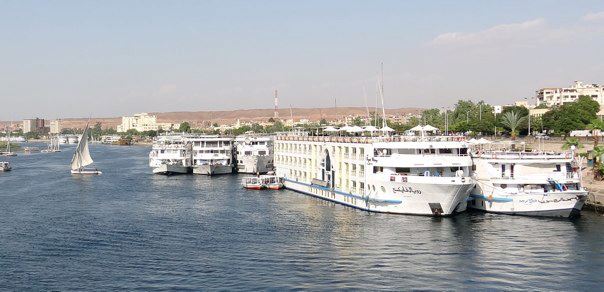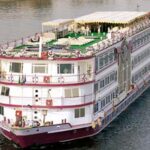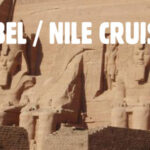Nile Cruise prices.
Nile Cruise prices Although Napoleon Bonaparte’s .expedition to Egypt in 1798 was militarily disappointing in its failure to wrench political power in the Mediterranean from the British, it heralded the birth of Egyptology in its impressive archaeological research and in the establishment of the Institut de Egypte in Cairo.
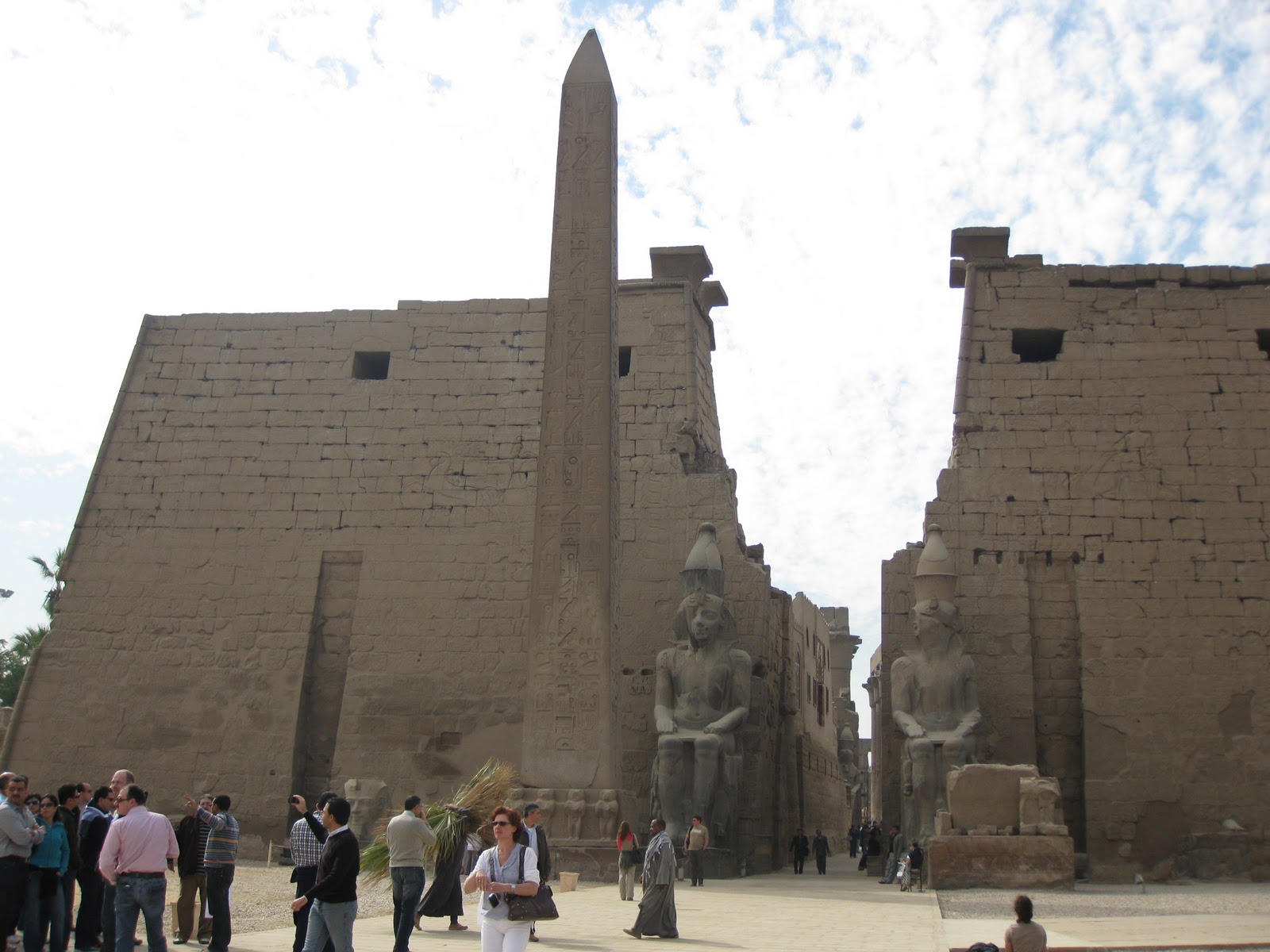
And with the eventual publication of the monumental Description de l’Egypte, the land of the Nile and its brilliant ancient civilization became known to the West.
Throughout medieval times, Egypt had remained relatively unknown to Europeans, little more than a source of legends and folk tales; a land of magic and the Arabian Nights.
Not until the sixteenth and seventeenth centuries were the `earliest visits made in search of antiquities, and even then all that was known of the history and monuments of Egypt was drawn from the accounts of classical geographers.
In the nineteenth century, the volume of traffic from Europe increased dramatically.
Early travelers were scholars, artists, and later photographers.
They made notes, wrote records, took measurements, and made drawings of everything interesting that they saw.
These works engendered even more interest in the civilization.
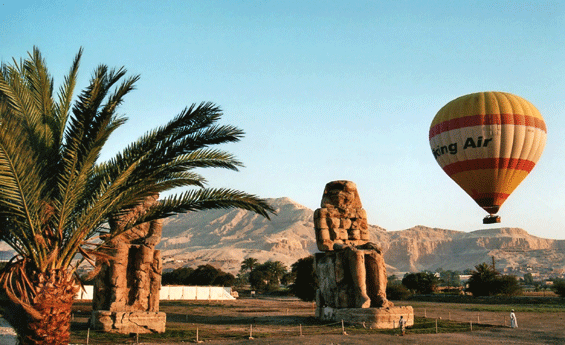
Since travel was regarded in those times as part of the education ofa gentleman, Egypt became included in the ‘Grand Tour.’ Lady Lucy Duff Gordon set a fashion‘when she traveled to Upper Egypt to seek a cure for tuberculosis in the mid-1800s.
After her came many of`Europe’s notables, who sought a retreat from Europe’s cruel winter. More people were attracted to Egypt by travelers’ accounts, especially those of Victorian novelist Amelia Edwards, whose book,A Thousand Miles up the Nile, published in 1877, became a classic. Amelia Edwards provided a remarkable insight into life in Aswan before the tum of the century. She picturesquely described a large convoy arriving at Mahatta, the northernmost point of the trade that
plied between Wadi Halfa and Egypt. It consisted of seventy camels laden with elephant tusks, which were packed in buffalo hides in groups of six. She estimated a total load of about 840 tusks in all, each about four meters in length.

Also in the convoy were a hunting leopard in a wooden cage, a wild cat in a basket, and gifts for Prince Hasan, the third son of the viceroy. All were gifts of a Nubian warrior, who was magnificently shawled and turbaned.
The river joumey from Aswan to Philae through the cataracts was a perilous one.
The river was studded with granite islets divided by uncharted channels.
There the water foamed over sunken rocks, or circled above the vortex of whirlpools.
The river boats, dahabeahs, had to be hauled through the treacherous rapids by rope pulled by Nubians walking on the shore. Difficult as it was to make the journey, visitors to Aswan increasingly did.
Amelia Edwards estimated that between forty and fifty vessels went up river annually to transport visitors to
see the famed monuments, especially in the winter months between November and March.
With the opening of the Suez Canal in 1869, Aswan began its touristic heyday.
The Khedive Ismail saw to it that pleasure boats were placed at the disposal of European dignitaries and heads of state.
Among them were the Prince and Princess ot” Wales (who spent six weeks sailing from Cairo to Aswan), the Empress Eugenie of France, and the Emperor of Austria, Franz Joseph.
The attitude of Egypt’s rulers to the country’s antiquities at that time is interesting; Khedive Ismail, for example, entertained distinguished guests by sending them in lavish dahabeahs up the Nile and granting them an excavation site in Upper Egypt or Nubia.
They could dig as deeply as they liked and keep whatever they found. If he was particularly anxious to please an illustrious guest, ‘ne would scout the location of a monument, leave it covered with sand, and allow his guest to ‘discover’ it.
Early visitors frequently carved their names and dates on monuments.
They physically removed whole statues or segments of wall relief.
This was the era when the great collections of Egyptian antiquities around the world were built up, notably by Belzoni in the British Museum, Capart in Brussels, and Schaparelli in Turin.
All were enriched with Egyptian spoils that were freely given away.
It is also worth noting that considerable damage was done to monuments by early Egyptologists, both professional and amateur. They made wet paper ‘squeezes’ of reliefs, often removing every vestige of the original color (the damage they wrought can be seen, for example, in the tomb of Seti I in the Valley of the Kings).
Sites partly excavated were left open.
They subsequently became prey to grave robbers, whoplied their trade in antiquities around Aswan and Luxor.
In the spring of 1896, a British-Egyptian military force under Lord Kitchener commenced operations against the Mahdists of Khartoum, and Aswan became the base for these operations.
Two years later the Mahdist army was defeated.
Sudan was reunited with Egypt under a special Anglo-Egyptian administration and the Egyptian government gave Lord Kitchener an island north of Elephantine, today known as Plantation Island in return for his successful campaigns.
Aswan became a residence for British civil servants, and its reputation as a holiday resort spread. Visitors came in increasing numbers and the city began actively to develop its tourist trade.
The Cataract Hotel, which opened in 1899, epitomized the elegance and sophistication expected by turn-of-the-cen» tury travelers.
It was built in Mamluk style and the dining room, with four sweeping arches that formed
meter dome, was a showpiece Among those who made a visit to Aswan an annual excursion was the late Aga Khan III, leader of the Ismaili community.
He chose a site on the western bank of the Nile, overlooking his favorite part of the river, for his cenotaph

